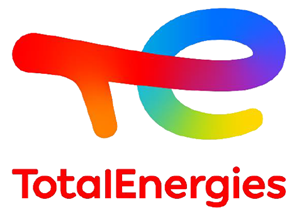Sign up for daily news updates from CleanTechnica on email. Or follow us on Google News!
Thermal energy storage has begun to emerge as an alternative to lithium-ion batteries, and it is going to be put to the test in the northeast US. The Israeli startup Brenmiller has just hammered out an agreement with the New York firm Rock Energy Storage, aimed at deploying its “bGen” thermal battery to push natural gas out of the industrial energy market across Connecticut, Maine, Massachusetts, New Hampshire, Rhode Island, Vermont, and New York.
Thermal Energy Storage: Buh-By Natural Gas
From a decarbonization perspective, thermal energy storage sounds pretty simple on paper. The basic idea behind bGen, for example, is to use electricity to heat crushed rocks to 650 degrees centigrade, when extra wind or solar energy (or both) is available. The system provides steam, hot water, or hot air on demand for industrial processes, eliminating the fossil-fueled boilers typically commonly in use.
If that rings a bell, you may be thinking of concentrating solar power systems, which deploy sunlight to heat up molten salt or a specialized oil. The hot solution is shunted to a generating station, to boil water for steam.
The bGen approach enables thermal energy storage without the need for large, dedicated fields of reflecting mirrors or troughs. The system can run on any source of electricity, on-site or grid-connected, with renewables being preferred due to their relatively low cost at off-peak hours.
Brenmiller also notes that the 2022 Inflation Reduction Act qualifies the system for “substantial federal incentives.” State and utility incentive programs could also come into play, leading Brenmiller to claim that its thermal energy storage “converts electricity into heat to power sustainable industrial processes at a price that is competitive with natural gas.”
Putting Thermal Energy Storage To The Test
Brenmiller is new to the CleanTechnica radar, so we need to do a bit of catching up here.
Deploying renewables-sourced electricity for energy storage is the most interesting aspect of bGen’s capabilities from a sustainability perspective, though it is not the only one. Brenmiller is also pitching the system as a balancer for conventional power plants, and it can be used in tandem with co-generation systems.
Brenmiller’s first deployment of bGen in the US is located at a co-generation station at the State University of New York (SUNY) campus in the hamlet of Purchase, New York. In addition to heating the storage medium with electricity, the system also deploys exhaust gas for heat. Overall, Brenmiller expects bGen to cut about 550 metric tons of greenhouse gas emissions from the facility.
The hamlet of Purchase, New York may seem like a random place to demonstrate a significant new thermal energy storage system. However, the SUNY project pairs Brenmiller with the New York Power Authority, described as the biggest state-based entity of its kind in the US.
In addition, part of the funding for the project came through the Israel-U.S. Binational Industrial Research and Development (BIRD) Foundation, which focuses on homeland security projects. Between the Power Authority and BIRD, the SUNY facility will be closely watched for signs of widespread application here in the US and elsewhere.
Widespread Application In The US Northeast
When Brenmiller announced the commissioning of the SUNY facility in December, the company’s Chair and CEO, Avi Brenmiller, anticipated that the project would demonstrate the benefits of the bGen system, leading to “broader adoption of our thermal energy storage systems in New York and across the U.S.”
It’s only been a few months since commissioning, but apparently Rock Energy Storage has already seen enough. Rock has been working with Brenmiller since 2019, and it is now the exclusive distributor of bGen in Connecticut, Maine, Massachusetts, New Hampshire, Rhode Island, and Vermont as well as New York.
Brenmiller announced the pairing on June 6, describing it as “definitive 5-year agreement” that is expected to reach more than $150 million in cumulative sales milestones.
“The Northeast is a strategic U.S. market for Brenmiller because of its forward-looking approach to electrification and decarbonization and is well-suited to take advantage of the sustainability and flexibility benefits that our cost-effective bGen™ technology unlocks,” Avi Brenmiller explained in a press statement.
In terms of access to renewable energy, the move into the upper Northeast market is a timely one. Vermont and New Hampshire have little or no ocean access, but the other states covered by the agreement are looking forward to a future powered by offshore wind turbines. Consequently, they will need more energy storage. Even Maine is in play for offshore wind, despite the technology challenges presented by its shoreline.
As a group, the seven states also have little or no fossil energy reserves of their own, making the idea of exploiting renewable in-state resources all the more attractive.
Thermal Energy Storage Fits The Long Duration Bill
To be clear, lithium-ion batteries have been the workhorses of the renewable energy transition. Li-ion battery arrays help shepherd more wind and solar connections into the power generation landscape, by storing enough electricity to tide the grid over at night or during cloudy weather and low-wind periods.
The concern is that Li-ion technology has reached the limits of its capability. Li-ion arrays typically last about 4-6 hours, enough to handle routine daily grid tasks or brief emergencies. However, a grid saturated with wind and solar needs more resiliency. It needs to store energy for longer periods of time, at less cost. The Energy Department has set the bar for long duration storage at a minimum of 10 hours, with much longer periods in the works (check out more long duration stories here).
Brenmiller states that its crushed-rock system stores heat for “hours or days.” When needed, the heat transfer is accomplished by water that flows through carbon-steel pipes that are in direct contact with the rocks, yielding steam at temperatures of up to 530°C.
The use of plain crushed rock is just one area of activity in the thermal energy storage field. CleanTechnica is also keeping an eye on specialized bricks, falling particles, strategic ice-making, and phase-changing materials.
Then there’s geothermal energy, of course. In previous years the US was only thought to have limited access to geothermal resources, but new technology has widened the field of opportunities, so stay tuned for more on that, too.
Follow me @tinamcasey on Bluesky, Threads, Instagram, and LinkedIn.
Photo (cropped): A new thermal energy storage system aims to push natural gas out of industrial processes in seven states in the US Northeast, with an assist from hot rocks (courtesy of Brenmiller).
Have a tip for CleanTechnica? Want to advertise? Want to suggest a guest for our CleanTech Talk podcast? Contact us here.
Latest CleanTechnica.TV Videos
CleanTechnica uses affiliate links. See our policy here.




